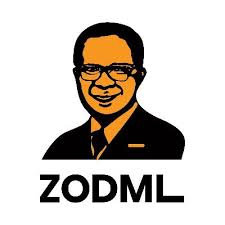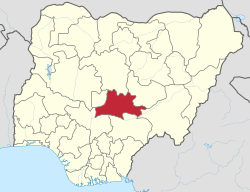INTRODUCTION
Nasarawa State is one of the six states plus the Federal Capital Territory that make up the North-Central geopolitical zone of Nigeria. It has interstate boundaries with Kaduna State to the North, the FCT to the West, Kogi and Benue States to the South and Taraba and Plateau States to the East. The state
LANDMASS, LOCATION, AND POPULATION
Nasarawa State covers an area of 27,117 square kilometres. It lies at 8° 32′ North and Longitude 8°18′ East. It has a population of 1, 869,377 (2006 census) 2,523,395 (2016 forecast) with a population density of 68. The state accounts for 1.3% of Nigeria’s total population
HISTORY AND PEOPLE
The early settlers of Nasarawa State included the Migili people. The state takes its name from Nasarawa, one of its main towns. Nasarawa State was originally part of the Northern Region in the three-region structure of 1954. With the creation of twelve federal states by General Yakubu Gowon’s military government in 1967, it became part of Benue-Plateau State.
In 1976 the military government of General Murtala Muhammed created nineteen states out of the existing twelve and Nassarawa State was made a part of Plateau State. The military government of General Sani Abacha carved Nasarawa out of Plateau State in 1996.
The main ethnic groups in the state are the Aguta, Alago, Basa, Ebira, Eggon, Gbagyi, Gwandara, Kanuri and Tiv. There are 29 languages in the state, including Agatu, Basa, Eggon, Gbagyi, Gade, Goemai, Gwandara, Ham, Kofyar, and Lijili.
Islam and Christianity are the main religions in Nasarawa State, although there are a number of traditional religion practitioners.
MAIN TOWNS AND CITIES
Lafia (capital), Akwanga, Doma, Karu, Keffi, Nasarawa, Nasarawa-Egon and Wamba.
LOCAL GOVERNMENT AREAS
ADMINISTRATORS AND GOVERNORS
Abdullahi Ibrahim (Administrator - Military): October 1996 - August 1998
Bala Mande (Administrator - Military): August 1998 - May 1999
Abdullahi Adamu (Governor – Civilian (People’s Democratic Party): May 1999 - May 2007
Aliyu Doma (Governor – Civilian (People’s Democratic Party): May 2007 - May 2011
Tanko Al-Makura (Governor – Civilian (Congress for Progressive Change/All Progressives Congress): May 2011 - May 2019
Abdullahi Sule (Governor – Civilian (All Progressives Congress): May 2019 – Present
ECONOMY AND EDUCATION
Nasarawa State is almost entirely woodland and tall grass savannah. Agriculture is very important in the state and the main occupation of the people is farming. Cassava, yam, rice, corn, guinea corn, beans, soya beans and millet are its major crops. Animal husbandry is also a significant commercial activity.
Minerals found in the state include coal, iron ore, zinc, copper, columbite, barite and aquamarine.
The tertiary institutions in the state are Federal University, Lafia; Nasarawa State University, Keffi; College of Agriculture, Lafia; Federal Polytechnic, Nasarawa; and Nasarawa State Polytechnic, Lafia.
FAMOUS SITES AND CULTURE
Sites
Farin Ruwa Waterfalls, Farin Ruwa
Farin Ruwa Waterfalls was discovered in Farin Ruwa along the boundary of Bokkos local government area by the British colonialists in the 1950s. Farin Ruwa means “white water” in Hausa and this speaks to how clear the water is. It drops from a height of 150 metres, making it one of the highest and most visited waterfalls in Nigeria.
Mada Hills, Akwanga
Mada Hills in Akwanga is one of the highest mountains in Nasarawa with an elevation of 860 metres.
Oyarore Salt Industry, Keana
The salt river in Keana, Keana local government area was discovered by a village head named Akyana Adi in 1232 AD. At the time of the discovery, salt, as a condiment was unknown. The area’s salt industry has been the source of livelihood for the community for more than eight centuries.
Culture
The Alago people in Doma mark the Odu festival every March to celebrate victories over their enemies. It also heralds the onset of the rainy season. The Oyarere festival is associated with the sighting of the moon in Assaikio community in Lafia-North LGA. The festival is celebrated every December. Other major festivals include the Odu, Amiri, Sharo and the Oguh dance.
NOTABLE INDIGENES
Muhammadu Chindo-Yamusa II (1945 – 2015)
Aliyu Akwe-Doma (1942 – 2018)
DID YOU KNOW
A ruler of the Nasarawa Emirate, Muhammadu, who reigned from 1878–1922 was one of the first emirs to pledge allegiance to Great Britain in 1900.
NASARAWA STATE IN PICTURES

